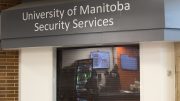As the school year begins, I can’t help but reminisce about the past few years. I often think about how our lives and university experiences changed because of the COVID-19 pandemic. In particular, I think about how difficult first-year students have it now.
As a student who graduated high school during the COVID-19 pandemic, my journey into university life was far from ordinary. I was one of many students who started university during the isolated and lonely time of social distancing. The pandemic shifted the trajectory of our academic lives, and the effects can still be felt three years after it began.
For one thing, the shift to remote learning during lockdowns reduced the number of in-person interactions students had, our chances to meet other students and our opportunities to participating in extracurricular activities at the university. The social aspect of university was diminished.
Over the course of the pandemic, many aspects of university life went online. From virtual orientation events to virtual classes, it seems that almost everything had a digital alternative. There are downsides to this shift. Virtual resources can be a blessing to some, but a burden for others.
It is undeniable that this new aspect of university has had a huge effect on students. Relying on virtual tools reduces many students’ chances of in-person interaction with their classmates.
It can be very challenging for first-year students to navigate the vast amount of supports available online. While the university has an abundance of resources and many helpful support staff, finding the correct support can be challenging, especially for those new to the university environment.
Navigating my way through my first year of university was a challenge.
As a first-generation university student in Canada, my unfamiliarity with the university system combined with the restrictions of the pandemic made accessing the correct resources a challenge. I had no idea who to turn to when I needed help or what to Google when I looked for options available to me.
I remember spending countless hours Googling, scouring my inbox to find the correct emails I needed and browsing Reddit to see if any of my peers had the same questions.
The results of my searches were astounding.
There was a recurring pattern in the results I found. Many virtual resources were inaccessible. Many students had the same questions I had and needed the same help I needed. However, many students had trouble using resources effectively because they did not know they existed.
For example, finding the correct credentials and steps for signing into the university’s Wi-Fi is difficult. While there is a page on the Information Services and Technology section of the U of M’s website to help with Wi-Fi issues, many students do not know that this resource exists.
Resources such as Aurora and a complicated process for signing into Wi-Fi have caused barriers in accessibility. Some students run into errors when they use Aurora or log in to Wi-Fi, and so are unable to complete their tasks.
There are many pages on the university website and in emails sent by the university that help students use the campus Wi-Fi and Aurora efficiently. However, many students are not informed about how to find these pages because emails get lost or buried quickly, or because students do not even know these resources exist.
I believe this points to a bigger issue in the picture. Rather than a lack of resources for first-years, there is a lack of guidance in accessing these resources, contributing to a significant barrier in accessing these supports. Students are left to figure things out on their own.
As a result, many first-year students do not know what they have access to at the university or simply are unable to access these resources because they do not know how. There is an abundance of resources available for students. However, many of these resources remain unused because of the lack of knowledge. For example, many first-year students are unfamiliar with the services offered by student advisors or visiting IST to get help with logging in to the student Wi-Fi.
It is extremely important that we prioritize increasing access to these resources, because many of them are crucial for first-year students. Barriers should not prevent students from accessing information.
We can take steps to improve accessibility by educating first-year students about the resources available to them during orientation by requiring them to attend a mandatory presentation, or by sending out multiple emails with the list of resources available.
Furthermore, another idea that can be implemented is creating a course on UMLearn with all available resources available. This could address the issue of emails being lost and the lack of knowledge when Googling for a resource.
Until there is increased support for first-year students, accessing resources will always be a barrier for some of them.





